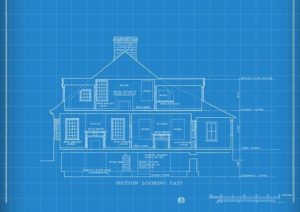 Are you ready to become a Virtual Real Estate Owner? Have you read the preceding articles in this series Virtual Real Estate – Buy or Build? and Cash in the Virtual Attic? By following the Virtual Real Estate Blueprint, you’ll guarantee yourself a much better chance of success.
Are you ready to become a Virtual Real Estate Owner? Have you read the preceding articles in this series Virtual Real Estate – Buy or Build? and Cash in the Virtual Attic? By following the Virtual Real Estate Blueprint, you’ll guarantee yourself a much better chance of success.
Ignore this blueprint at your own risk. Imagine you’re climbing a staircase and each step has a task for you to accomplish before you continue to the next and finally make it to the top marked “Proud New Home Page Owner.” Remember, you are spending your own money on this venture, so perform your due diligence to minimize your risk. What sort of due diligence research? Read on to find out.
Step 01: Plan
What is your plan? You need to have a solid business plan in place before you ever buy your first website. Think these questions through. Where do you see this site a week from now? 3 months from now? 6 months from now? Are you planning on flipping this site, or do you want to keep it as a long-term asset? Your answers to these questions will help guide you toward buying the right Virtual Real Estate and show you how best to market your websites to maximize revenue.
Step 02: Seller
Have they sold sites in the past? What can you find out about them on Google, LinkedIn, Facebook, etc.? If they have sold a site before, what is their feedback score? Do they appear to go the extra mile? Do you feel they will be helpful in the transaction process?
Step 03: Domain
What is the validity of the domain? Does it have page ranking? Who is the site listed to? Will you receive all rights to the name along with the site?
Step 04: Revenue
How much revenue is generated? Is the seller willing to provide valid evidence to back up their revenue claims? When you see the books, make sure you see how much is going out vs. how much is coming in. How can you increase revenue and minimize risk? How hard will it be to redirect the cash flow?
Step 05: Content
Be sure to check out your competition! How does their content compare to yours? Make sure your content passes Copyscape and other plagiarism tests that are available, many free, on the web.
Step 06: SEO
What are the incoming links doing for you? What are your current and potential rankings? Are there any backlinks? What is your SERP (Search Engine Results Page) competition, and what can you do to optimize your pages?
Step 07: Traffic
Is the seller claiming any traffic to the site? Is it real, unique visitor traffic, or merely hits to artificially boost Alexa ranking? Are there certain days or times when you get more or less traffic? Where is the traffic coming from? If there is traffic, what is the conversion rate? Do you already have a plan for improving this?
Step 08: Price
What is the price of the site? Is it a good value? Always negotiate and prepare by learning everything you can about the seller. Know what you want out of the deal, what you’re willing to accept, and what concessions you’re willing to make. Most of all, remain open to alternative solutions and work together toward mutual benefits.
Step 09: Transaction
How do you think the transaction should go? It’s always wise to consult an attorney. Better to pay a little now than what it will cost you in transaction or contract issues. Make sure you write everything down and your attorney approves all documents.
Step 10: Contract
The transaction brings us to the last step which is the contract. Is this contract fair to both sides? Again, it is an excellent idea to hire an attorney since you, or the seller, may unintentionally slant the contract. Later on, this could lead one party or the other to claim damages. Leave the legal work to the experts and focus on what you do well–buying, developing, and selling Virtual Real Estate.
This is merely a quick overview of the ten-step Virtual Real Estate Blueprint. The next ten articles will each include a checklist, one for each of the preceding steps, starting with your plan.
*Originally published on WorldStart March 25, 2010

